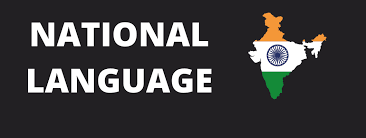Understanding the National Languages of India
Introduction: The Diversity of Indian Languages
India is a land of immense linguistic diversity, with 22 officially recognized languages under the Eighth Schedule of the Indian Constitution. These languages reflect the rich cultural heritage and the complex social fabric of the country. Understanding the official and national languages of India is crucial for students preparing for various government exams, as it relates to India’s administrative, cultural, and political frameworks.
Official Languages of India
India’s Constitution designates Hindi as the official language of the central government, with English also used for official purposes. Hindi, written in the Devanagari script, is spoken by a significant portion of the population. English serves as a subsidiary official language, especially for legal and administrative purposes, and is often used in government communications and documentation.
Scheduled Languages and Their Importance
The Eighth Schedule of the Indian Constitution lists 22 languages, including Assamese, Bengali, Gujarati, Kannada, Malayalam, Marathi, Nepali, Oriya, Punjabi, Sanskrit, and others. These languages are recognized to promote linguistic diversity and cultural heritage. Each state in India can adopt its language for administrative and educational purposes, reflecting local cultural and linguistic identities.
Language Policy and Implementation
India’s language policy aims to balance the promotion of Hindi and English while respecting regional languages. The policy encourages the teaching and use of regional languages in education and administration, ensuring that linguistic diversity is maintained. This approach helps in fostering national integration while preserving regional identities.
Challenges and Opportunities
Despite efforts to promote linguistic diversity, challenges remain, such as ensuring the survival of endangered languages and addressing linguistic disparities across regions. The central and state governments are continuously working on policies and programs to address these challenges and promote the use of all recognized languages.

Why This News is Important
Promoting Linguistic Diversity
The recognition and promotion of various languages in India highlight the country’s commitment to preserving its rich linguistic heritage. Understanding these languages is essential for government exams as it underscores the importance of cultural and regional diversity in national integration.
Administrative and Educational Significance
The implementation of language policies affects administrative efficiency and educational outcomes. Knowing the official and scheduled languages is crucial for students aiming for positions in administration, education, and other government sectors where linguistic skills are relevant.
Historical Context
The Eighth Schedule of the Constitution
The Eighth Schedule of the Indian Constitution, added by the 71st Amendment Act, 1992, recognizes 22 languages. This inclusion aimed to protect and promote linguistic diversity, reflecting India’s multicultural ethos. The list has evolved over time, with languages being added to ensure comprehensive representation.
Language Movements and Policy Changes
Throughout Indian history, various language movements have shaped language policy. The push for regional language recognition and the promotion of linguistic equality have been central to political and social reforms, influencing the current language policy framework.
Key Takeaways from Understanding the National Languages of India
| Serial Number | Key Takeaway |
|---|---|
| 1 | Hindi and English are the official languages of India. |
| 2 | The Eighth Schedule lists 22 languages recognized by the Constitution. |
| 3 | Each state in India can use its language for administrative and educational purposes. |
| 4 | Language policies aim to promote both national integration and regional diversity. |
| 5 | Understanding the language policy is crucial for roles in administration, education, and government. |
Important FAQs for Students from this News
1. What are the official languages of India?
India has two official languages at the central government level: Hindi and English. Hindi is written in the Devanagari script, and English is used for legal and administrative purposes.
2. How many languages are recognized in the Eighth Schedule of the Indian Constitution?
The Eighth Schedule of the Indian Constitution recognizes 22 languages. These include Assamese, Bengali, Gujarati, Kannada, Malayalam, Marathi, Nepali, Oriya, Punjabi, Sanskrit, and others.
3. Why is it important to know the national languages of India for government exams?
Understanding the national and official languages of India is crucial for government exams because it reflects the country’s administrative, cultural, and political frameworks. Many government positions require knowledge of these languages for effective communication and administration.
4. How does India promote linguistic diversity?
India promotes linguistic diversity through its language policy, which encourages the use of regional languages in education and administration. The Eighth Schedule’s recognition of 22 languages also helps preserve and promote India’s rich linguistic heritage.
5. What challenges exist in promoting linguistic diversity in India?
Challenges in promoting linguistic diversity include ensuring the survival of endangered languages, addressing linguistic disparities across regions, and balancing the promotion of Hindi and English with the preservation of regional languages.
Some Important Current Affairs Links


















